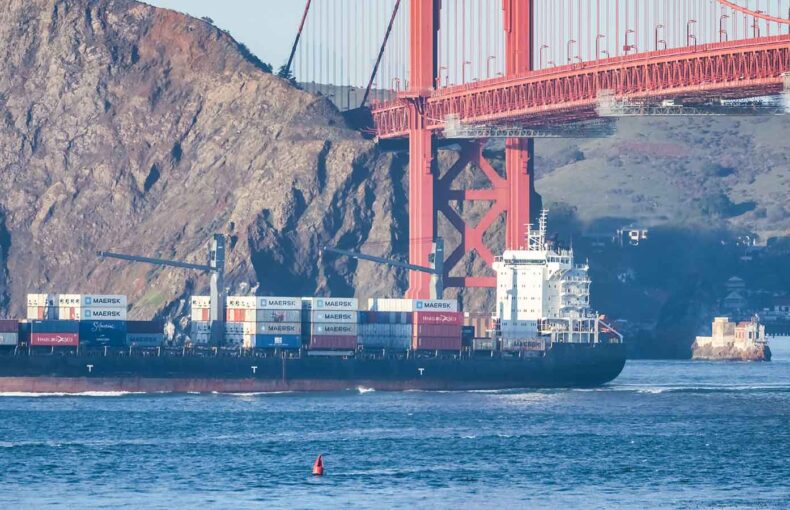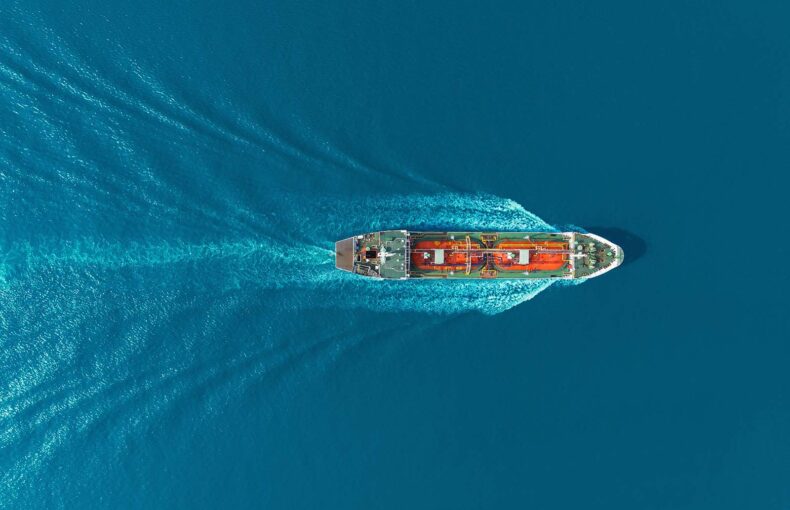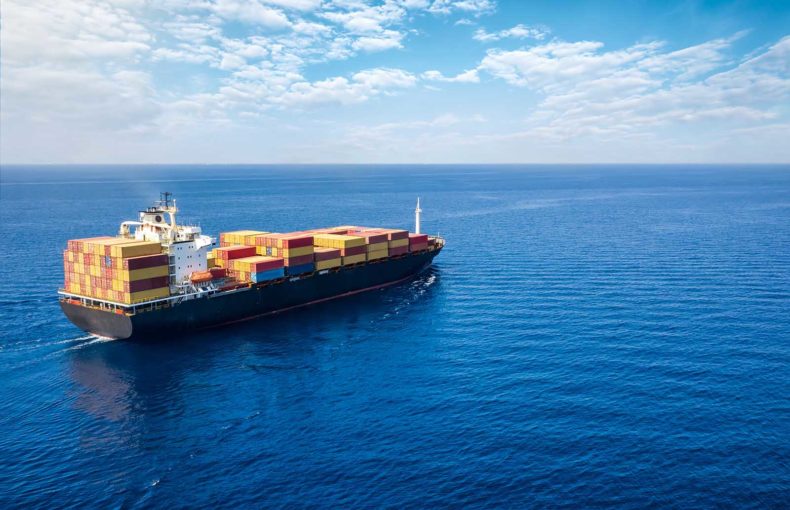What are EU MRV reporting requirements?
New maritime protocols will be based on collected emission data, and vessel owners and charterers will be compelled and incentivized to reduce emissions.
Part 1 of a three-part series on global plans to monitor maritime shipping emissions.
On a broad scale, the global community is beginning to take concrete steps to reduce greenhouse emissions. Both the run-up to, and aftermath of, the United Nations’ recent COP 27 Climate Conference in Egypt has seen a number of new initiatives.
We thought this would be a good time to take a look at the three main groups that are putting guidance and regulations in place to monitor the maritime industry. First up, the European Union (EU).
The EU: A regulatory leader
Beginning with the EU shouldn’t be surprising, since it is often first out of the gate with strong regulatory policies; in this case, they significantly alter the operations of its carbon market and better meet lofty goals to cut overall emissions. These moves are in line with the broader goals that were established as part of the 2015 Paris Agreement (COP 21), which included the EU Emissions Trading Scheme (ETS) that had a direct impact on maritime transportation operations.
The first step: Building a baseline
The EU MRV was actually the first emission reporting scheme introduced to the maritime sector in 2018 with a monitoring system to establish a baseline for emissions data. The UN’s International Maritime Organization (IMO) followed with their DCS Plan in 2019, followed by the UK’s MRV emissions guidelines.
Premised on a monitoring, reporting, and verification (MRV) outline, this is a first step to pursuing net zero emissions, and build a database on which to construct the kind of regulatory system now being implemented by the European Parliament.
Monitoring
The goal of this monitoring is to assess the actual efficiency of ships, with special focus on fuel consumption and cargo data. This builds the kind of data sets that can be used to improve the efficiency of maritime operations.
All ships over 5,000 gross tonnage (GT) are tracked on voyages to or from EU ports of call. Information monitored includes fuel consumption, cargo carried, distance traveled, time (duration of the trip and time in port and at a terminal), and either dead weight or cargo weight transported.
Reporting
Vessel operators collect and record data over the course of a year and report it to ship owners. Currently, this is done manually via specific reporting forms or with spreadsheets that record the required information regarding emissions, cargo, distance, and ports visited. Once ashore, the data is submitted to the shipping company and a verifier reviews it.
Verification
Since manual reporting is not completely reliable, the verification process is a crucial step. It should be noted that even verified data can still contain unreliable data due to human error and irregular record keeping, including the training level of those who are keeping records onboard and the oversight of those records prior to coming ashore.
This is one reason why the collection of information through data streams like the maritime automatic identification system (AIS) is so important.
Under current EU practices, the records that operators hand over are examined by independent, accredited verifiers who—to avoid any conflict of interest—are not affiliated with any global societies or governments.
Once these professionals have done their work, the EU publishes the data on its publicly-accessible website. At the same time, some shipping companies are not in favor of public reporting: Some would prefer that information about the efficiency of their vessels not be available to the public or their shareholders.
Enforcement and consequences of non-compliance
Penalties for not submitting verified data include being banned from doing business in the EU. Individual member nations control enforcement procedures. Germany, for example, levies a fine of up to €50,000 on a shipping company if it is late submitting data for two years in a row.
The MRV was always horizon-based
As already mentioned, the European Parliament is currently transitioning from gathering data to taking action. The centerpiece of this effort is the European Emission Trading System (EETS) which, as of the writing of this article, is being expanded and will include the shipping industry.
The EU’s deal marks a watershed moment for shipping decarbonisation. No longer will shipping be let off the hook for its massive climate impact. No longer will international emissions be ignored by national policymakers,” explains Jacob Armstrong, the sustainable shipping officer of the European NGO Transport & Environment (T&E), as quoted by CleanTechnica. “With this ambitious ETS covering all greenhouse gases, offshore vessels and ensuring funding for green shipping, the EU has thrown the gauntlet down to other jurisdictions like the US, China, and Japan to make this hugely important first step towards zero-emission shipping.”
The carbon market operates via emission allowances that are traded. It has been in operation for a number of years with, for example, the airline industry already a part of it. But starting in 2024, shipowners will also have to start providing compensation for the CO2 emissions they produce when operating in the European Union.
For the shipping industry, new protocols will be developed based on emission data collected. Vessel owners and charterers will be compelled and incentivized to reduce emissions.
The cap-and-trade system will soon cover all emissions on voyages within the EU and 50 percent of overseas routes for vessels over 400 GT and will include a steep upslope:
- 20 percent of verified emissions reported for 2023,
- 45 percent for 2024,
- 70 percent for 2025,
- 100 percent for 2026 and each year thereafter.
Based on 2020 emissions data, it is foreseeable that this will have a financial impact on the shipping industry in the range of €8.4 billion.
The market will bring clarity
An impact in the billions of euros will get the private sector’s attention. The system’s extension to maritime companies is meant to compel shipping owners to think long and hard about efficiency—not only how to make the engineering of their ships more efficient, but decision-making that will make operations more cost-effective as well.
In its simplest terms, the EETS is a mechanism to create an equilibrium between physical emissions and economic expenditures, with CO2 as the baseline on the physical side and euros on the monetary side. Basically, one permit (an allowance) must be bought to compensate for the release of one metric ton (MT) of CO2.
Not surprisingly, an equation that simple is not possible in a system as complex as the maritime transport industry — the type of fuel and a myriad of other factors are at play — but very roughly one MT of fuel burned will create three MTs of CO2.
So, the bottom line is that based on the November 2022 price of EU carbon permits (€75 per MT), emitting 10,000 MTs of CO2 as part of EU operations will cost a ship owner €750,000 annually.
The direct financial responsibility falls on owners, though it is the charterers and crew they have hired who make the day-to-day decisions — course, speed, destination, etc. — that affect operational emissions. While costs owners absorb under the EETS will ultimately be passed along the supply chain, there will be direct pressure to optimize maritime operations as much as possible, including over the long term with more efficient ships that harness alternative forms of power.
The EETS incentivizes ship owners and managers to use ships as efficiently as possible, since there’s now a direct price attached to every metric ton of CO2 they emit. The quick rise to 100 percent of verified emissions by 2026 makes this a matter of immediate attention for operators.
More Granular and Expanded Data
Moving forward, the need to collect accurate and fully verified data will only grow. Being able to model emissions for specific ships and use it for both operational planning and ship data verification purposes will be a powerful tool.
Given that data has to be confirmed before submission to any government bodies, shipowners will be incentivized to seek solutions. Types of data that are required to be independently verified include:
- Applicability (whether a vessel was in the EU)
- Voyage distance
- Consumed fuel (used to determine the amount of CO2 emitted)
- Locations (ports, anchorages, etc.)
- Cargo carried
Future areas that may be added to reporting mandates include weather conditions en route, long anchorages, extended port stays, events that may have endangered the safe navigation of ships, and—as Arctic shipping becomes more common—data on ice navigation.
The continued expansion of the EU’s climate mitigation standards into maritime shipping is an exciting endeavor to curtail one type of human behavior that is driving global warming.
Read more in this series:
- Part 1 (current): What are EU MRV reporting requirements?
- Part 2: What are the IMO regulations?
- Part 3: A guide to UK MRV requirements
 Written by
Written by


